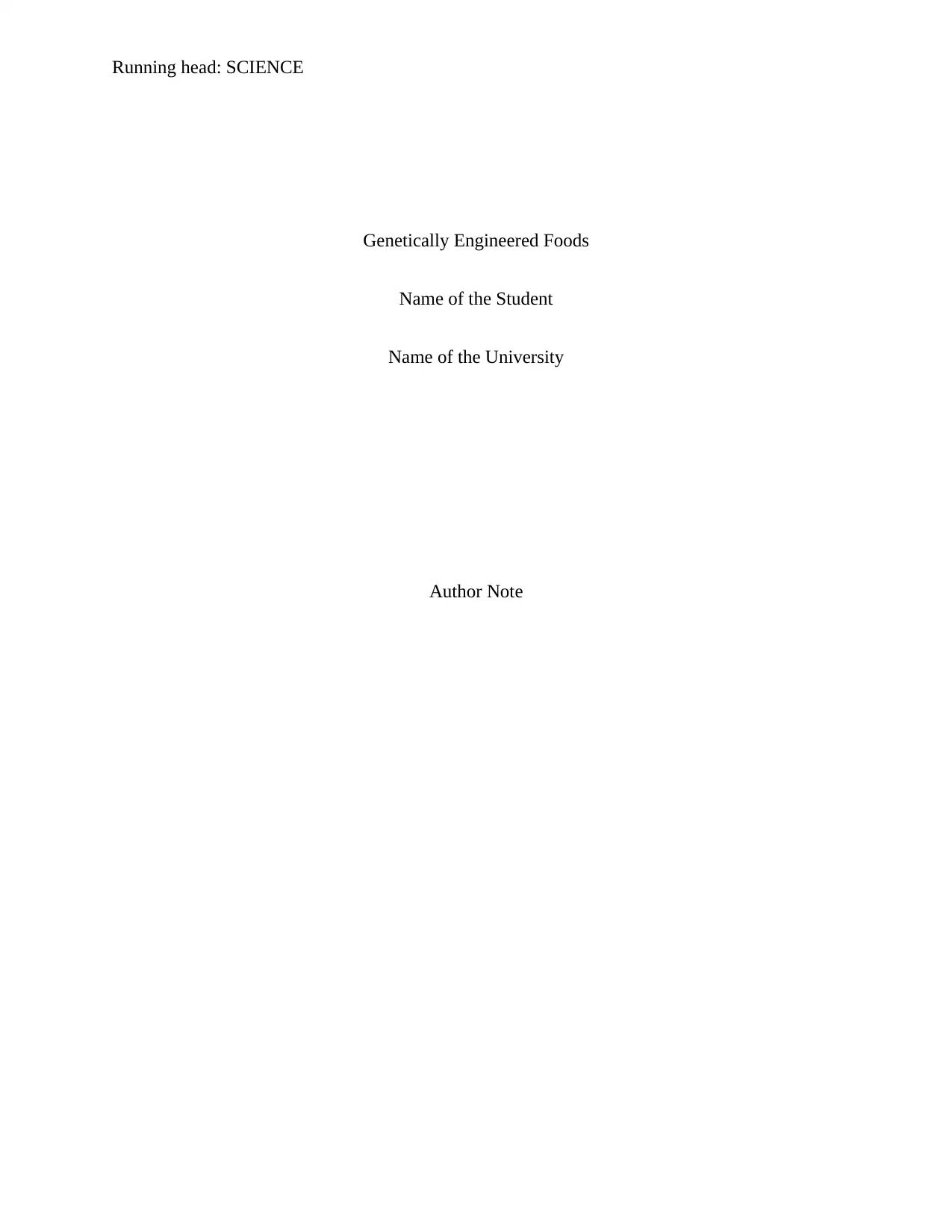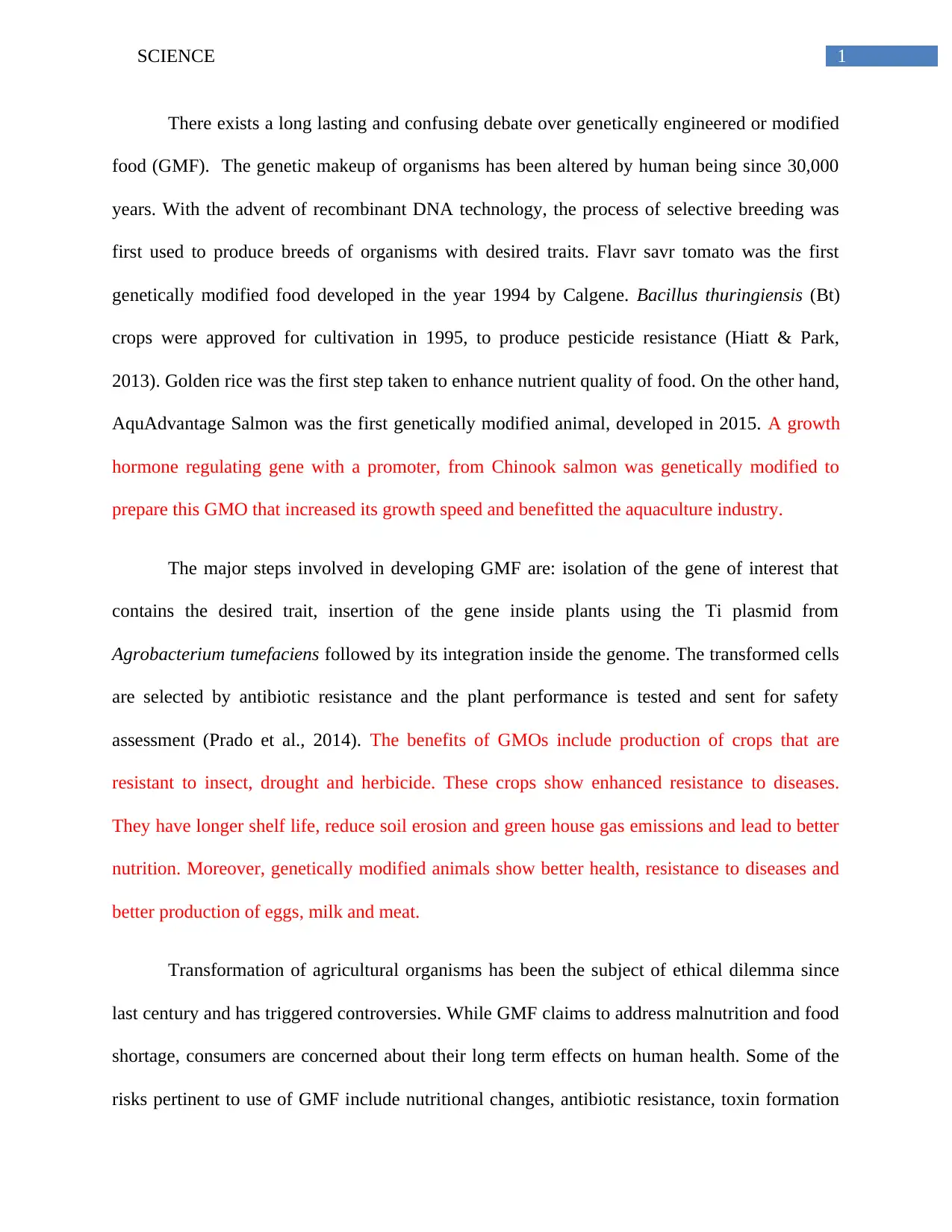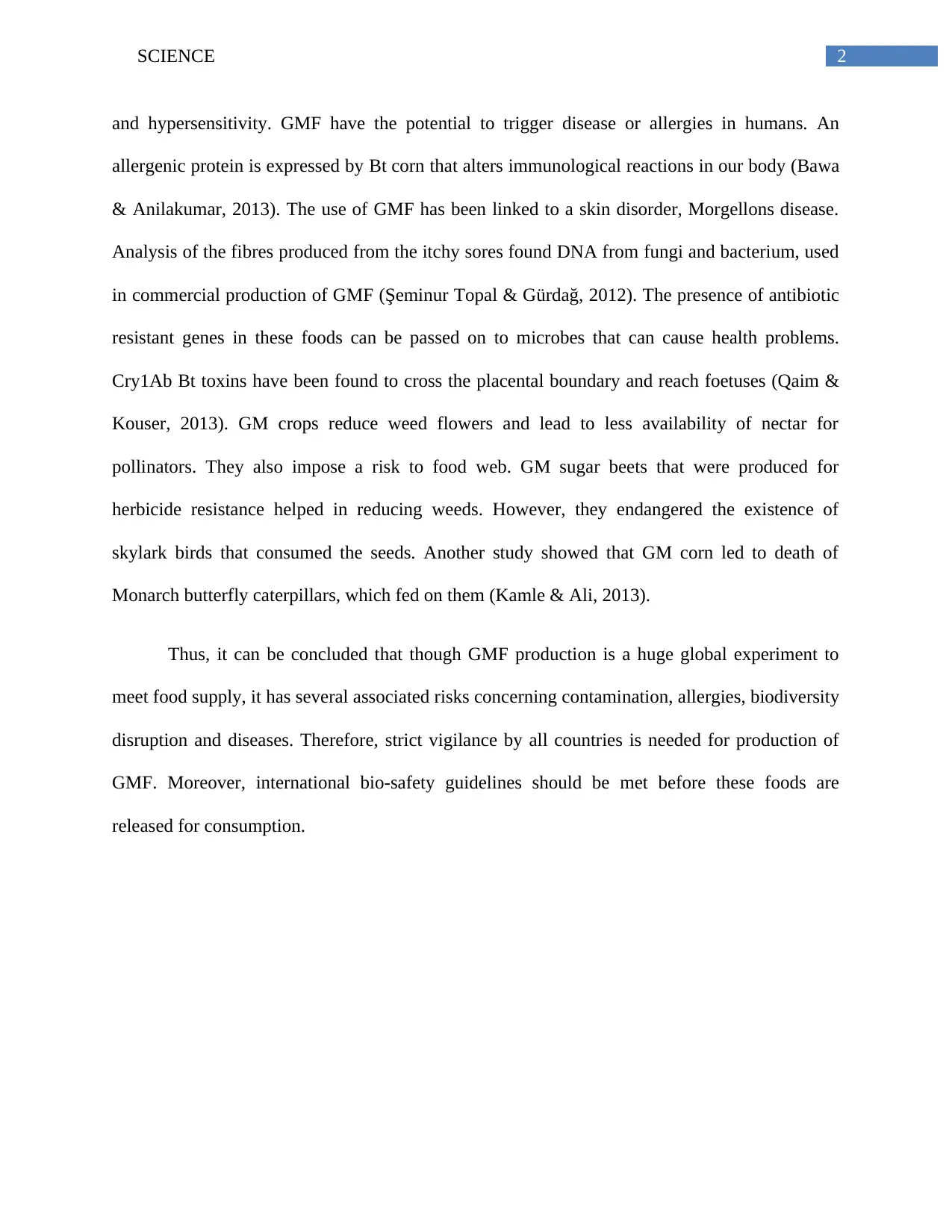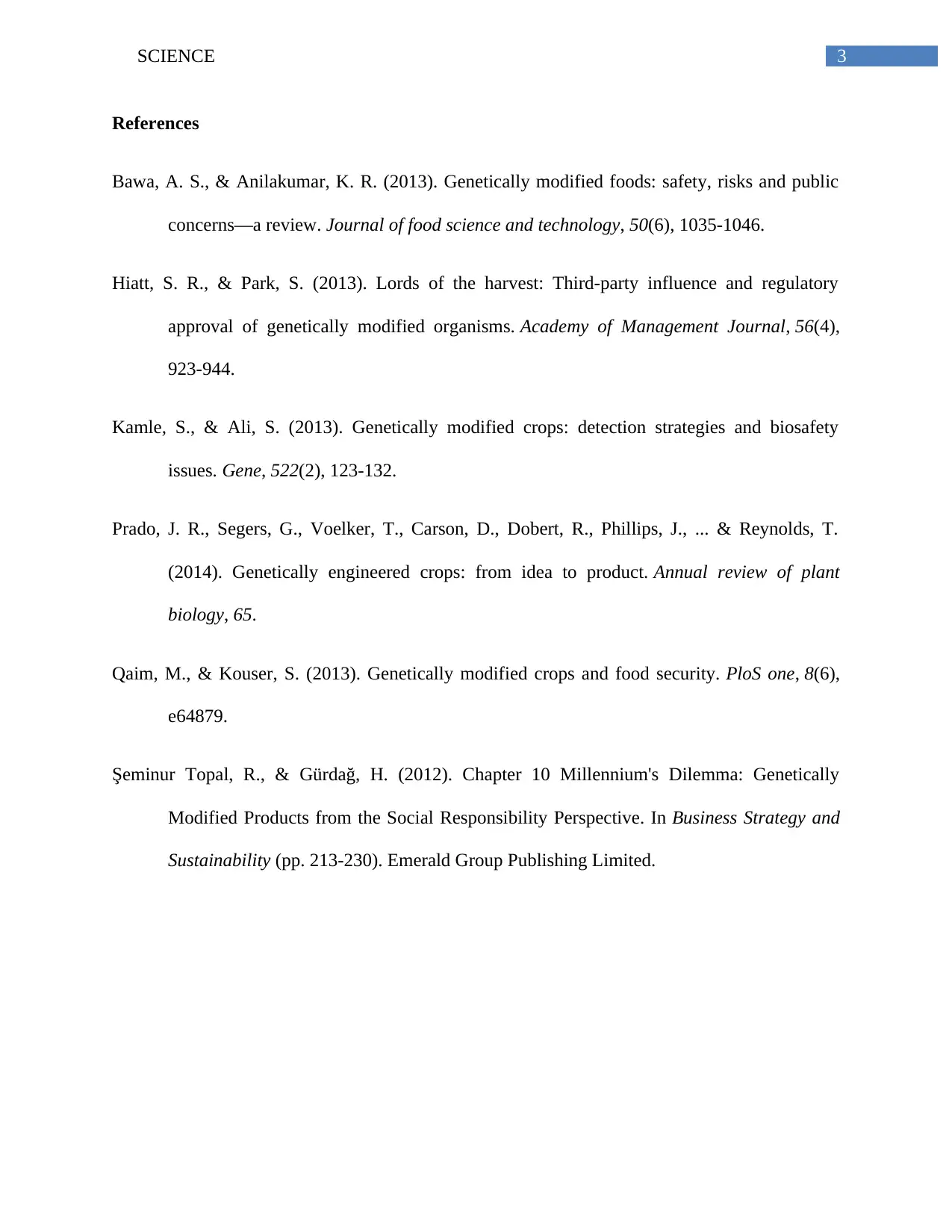Science Assignment: Genetically Engineered Foods - Benefits & Risks
VerifiedAdded on 2020/05/08
|4
|883
|111
Essay
AI Summary
This essay delves into the complex world of genetically engineered foods (GEF), also known as genetically modified foods (GMF). It traces the history of GMF, from the early days of selective breeding to the advent of recombinant DNA technology and the development of the first genetically modified food, the Flavr Savr tomato. The essay outlines the major steps involved in creating GMF, including gene isolation, insertion, and integration. It then discusses the benefits of GMF, such as increased crop resistance, enhanced nutritional value, and reduced environmental impact. However, the essay also explores the potential risks and ethical dilemmas associated with GMF, including concerns about human health, allergic reactions, antibiotic resistance, and the impact on biodiversity and the food web. The author concludes by emphasizing the need for strict vigilance and adherence to international biosafety guidelines in the production and consumption of GMF.
1 out of 4











![[object Object]](/_next/static/media/star-bottom.7253800d.svg)